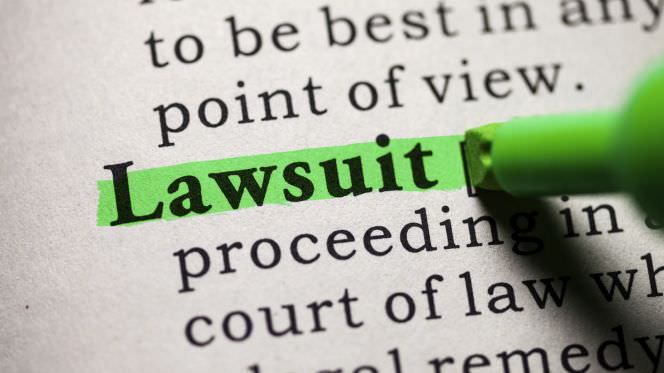Other infill options
Coated rubber: Ambient or cryogenic rubber like that in crumb rubber but coated in colorants, sealers or antimicrobial substances that encase the rubber.
Ethylene propylene diene monomer: Polymer elastomer. Resistant to atmospheric and chemical agents.
Organic: Organic infills can be made of a variety of materials such as cork or coconut husks, and are recyclable.
Silica sand: Nontoxic, chemically stable, natural, heavy-metal free and fracture resistant. Silica sand must be 90 percent pure or greater or there is a risk of the grains crushing or absorbing bacteria or other contaminants.
Coated silica sand: Sand covered in elastomeric or acrylic coating seals grain off from bacteria, and is nontoxic.
Thermoplastic elastomer: Nontoxic, heavy-metal free, recyclable and reusable.
Source: Synthetic Turf Council
From an athletic facilities maintenance perspective, the synthetic turf field at Summit High School in Bend is an enviable asset. The recycled rubber infill absorbs players’ falls, and it never turns to mud.
It remains to be seen, however, whether the field and thousands like it will be deemed an environmental health hazard and financial liability because of the pulverized vehicle tires sprinkled between blades of artificial grass.
Studies have shown so-called crumb rubber to be safe, but they have not ended the decade-long debate.
A group of former athletes battling cancer has questioned whether crumb rubber caused their illnesses, and now three federal agencies intend to conduct a joint study and weigh in with a report by year’s end.
“I think we need to be interested in and looking at the results of those further studies,” Bend-La Pine School Board Vice Chairwoman Peggy Kinkade said.
Recycled rubber and synthetic turf industry groups have estimated there are about 11,000 playgrounds and athletic fields across the country that employ crumb rubber. A spokesman for the groups said a state-by-state count would be impossible to tabulate. There are at least 80 schools in Oregon that have synthetic turf football and soccer fields, said Peter Weber, assistant executive director of the Oregon School Activities Association, though it’s unknown whether all of them use crumb rubber infill.
Recycled tires are also used in playground surfacing material. The most common is rubber tile, which is made of recycled tires and coated in a polyurethane, according to the sustainable building industry publisher BuildingGreen.
The Bend Park & Recreation District has several playgrounds with rubber surfaces. Construction Manager Brian Hudspeth said he’s very aware of the “political” problem associated with crumb rubber. Hudspeth pointed out that the rubber in playground surfacing is typically coated and contained with other materials.
Hudspeth said he won’t change anything until he sees the results of the latest federal research.
“All the tests they’ve done and looked at is saying it’s not causing these problems,” he said.
If the new research reaches a different conclusion, Hudspeth said, “It’s going to be akin to the asbestos epidemic of the ’80s. You can’t imagine the amount of things that have rubber in them.”
Summit became the first school east of the Cascades in Oregon to get a synthetic turf field in 2008 after donors raised $485,000. The field was supplied by FieldTurf, which referred questions to an industry spokesman.
Kinkade said she’s seen news reports over the past several years about crumb rubber, which, like dirt, gets caught in athletes’ hair, stuck to skin and ingested. Kinkade said she’s not heard of concerns raised locally. Having walked across the field as a volunteer at her son’s Summit High track meets, she’s familiar with the playing surface. “You always end up with little bits of rubber in your shoes,” she said.
Bend-La Pine Schools is not considering building any new playing fields in the next year, spokeswoman Julianne Repman said. Because of cost concerns, natural grass is the district standard, she said. If any fields were in the works, and if donors wanted to raise enough money to pay for artificial turf, she said, the district would also have to consider the pending federal study before moving forward.
This is not the first environmental health debate centering on artificial turf.
In 2008, the U.S. Consumer Product Safety Commission sampled artificial turf fields for lead in the faux grass fibers and concluded that where lead was present, it was either trapped in the fibers as pigment or present in a concentration too low to pose a hazard to children. Bend-La Pine tested the Summit field and concluded it was safe.
A national concern
Synthetic turf manufacturers say that more than 60 studies over the past two decades have shown no elevated health risks associated with their products, but not everyone is convinced.
Environmental health advocates worry about a complex brew of chemicals, metals and suspected carcinogens that may be found in crumb rubber. They characterize past research as incomplete.
With legislators asking for more information, the Environmental Protection Agency, Consumer Product Safety Commission and Centers for Disease Control plan to conduct an independent study and issue a draft by the end of the year.
Emily Prince, a college biology major and former soccer player, is one of the athletes and cancer patients who’ve raised questions about crumb rubber. She’d been diagnosed with Stage 2 Hodgkin’s lymphoma in her lungs when her golf coach at Vassar College in New York drew her attention to the debate over synthetic turf and, in particular, crumb rubber.
Prince recalled playing soccer as a girl and coming home with tiny black granules stuck to her skin and caught in her hair.
“When I heard about this,” she said, “it made sense to me.”
A long way from AstroTurf
Synthetic fields have been popular since the mid-1960s and the debut of “AstroTurf” at the Astrodome in Houston.
In those days, artificial turf was not much more than carpet laid over concrete. Manufacturers introduced a gentler surface using crumb rubber in the 1990s.
Athletes took fewer hard falls and, as a side benefit, millions of tires were diverted from landfills.
“This is bio-friendly,” said Al Garver, president of the Synthetic Turf Council, a national trade association. “You don’t need any pesticides or herbicides.”
But the list of potentially harmful elements that have been found in tires includes benzene, mercury and arsenic, according to the Environmental Protection Agency. Ingredients vary by manufacturer, and the recycling process blends different brands into the same batch, so it is difficult to predict what will end up on a specific field.
Some older types of synthetic turf have been found to contain relatively high levels of lead. In 2009, the California Attorney General’s Office sued three manufacturers for violating state law by failing to provide “clear and reasonable warnings” about lead content in turf fibers and crumb rubber.
The following year, the companies agreed to pay more than $650,000 in fines and reduce the lead in their products.
At the federal level, the EPA and U.S. Consumer Product Safety Commission have examined crumb rubber and found no elevated health risks. But in a statement this month, the EPA acknowledged “existing studies do not comprehensively evaluate” all concerns.
U.S. Sens. Richard Blumenthal, D-Conn.; and Bill Nelson, D-Fla., have pointed to a recent analysis by a Yale University professor that found 96 chemicals, including probable carcinogens, in tire rubber.
The new “Federal Research Action Plan,” which pairs the EPA with the CPSC and the Centers for Disease Control, will examine how players on synthetic fields might be exposed through skin contact, inhalation and accidental ingestion.
Athletes with cancer
It was seven years ago that Amy Griffin, an associate soccer coach at the University of Washington, heard about two players she knew who were battling cancer. Both were goalkeepers.
“I really didn’t think anything of it at first,” Griffin recalled. “Then I kept bumping into other goalkeepers who had lymphoma.”
The position involves frequent diving, which makes goalies more likely to get crumb rubber on their skin and in their mouths. They are also susceptible to inhaling vapors or gases emitted from volatile organic compounds in crumb rubber.
Griffin began an informal list of athletes who had cancer, about 90 percent of them soccer players, with lacrosse goalies and football players included. As the total grew toward 200, she spoke out in the media.
Though some dismissed her unscientific tally, word spread and she heard from more afflicted players across the country.
“I know it’s 100 percent anecdotal,” Griffin said. “But if you were in my shoes, listening to these stories, you would say this is too coincidental.”
Washington state health officials recently asked for her data so it can be compared with the official cancer registry and, perhaps, used to find correlations or patterns. Griffin welcomes a methodical approach, though officials caution the study might not be conclusive.
“An increased rate of a specific cancer among soccer players wouldn’t show us what caused the increase, only if one exists,” the Washington health department said in a statement. “Historically, even when increased rates for certain cancers have been identified, a common cause or environmental contaminant has rarely been shown.”
Pro and con
If you had to pick two people at polar ends of this issue, they would probably be Garver and Nancy Alderman.
Garver’s trade association represents more than 200 turf manufacturers, architects and builders. Alderman heads a nonprofit health advocacy group in Connecticut. Both have become significant voices in the crumb rubber debate.
“It’s absolutely fair to ask questions,” Garver said. “As long as people produce substantive, scientific answers.”
The Synthetic Turf Council believes potentially harmful chemicals in old tires are rendered inert through processes that extract steel and fiber, then break the remaining rubber into bits. The council says no link to cancer has been found by researchers at the Connecticut Department of Public Health, the New York State Department of Environmental Conservation and numerous universities. It also cites studies conducted in France and Norway.
“All the information is there if you look at it rationally, logically, reasonably,” Garver said.
Alderman views the current literature in a different way.
The Yale-educated woman and her small organization — Environment and Human Health Inc. — began focusing on crumb rubber a decade ago when parents complained about synthetic fields in two Connecticut communities.
“We had only a small amount of money,” she recalled. “We took a few samples and took them to a laboratory and found some bad chemicals.”
In addition to questioning the scope of past studies, Alderman considers some of those studies unreliable because they were funded by the industry. She mentions an oft-cited report produced by CalRecycle, a state agency that promotes recycling.
“It is not a great system, and it has not worked,” she said.
Some agencies share her doubts. In 2008, the New York City parks department stopped using crumb rubber in new fields. The Los Angeles Unified School District followed suit the next year, switching to nonrecycled infills.
Athletic fields are only part of the concern — Alderman and others worry about crumb rubber in playgrounds for small children.
The L.A. school district removed crumb rubber from early education centers but left pre-existing fields for older students intact, noting the Los Angeles County Department of Public Health had placed no warnings or restrictions on crumb rubber.
Alderman sees momentum growing toward what she hopes will be a moratorium on all types of infill, including natural alternatives such as coconut husk and cork.
“Now there are lawyers hovering around this,” she said. “Eventually, there will be class-action suits.”
Such talk clearly frustrates Garver. The industry representative said his members are confident future tests will confirm their products are safe, though he is not sure that will do any good.
“It’s never enough,” he said. “There’s no way to satisfy the alarmists.”
— This story was written by Kathleen McLaughlin of The Bulletin and David Wharton of the Los Angeles Times.
Reporter: 541-617-7860,
Source: www.bendbulletin.com




